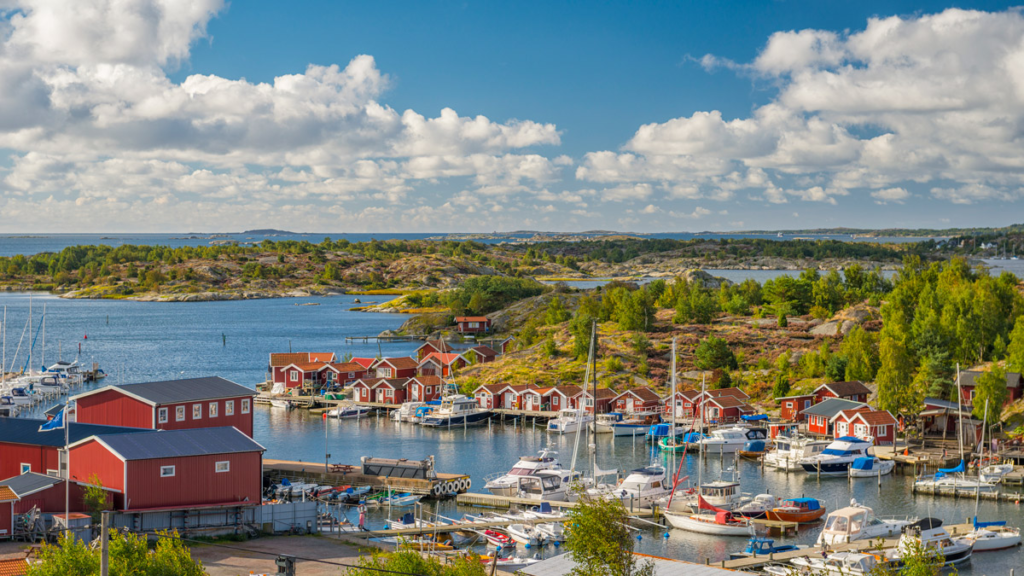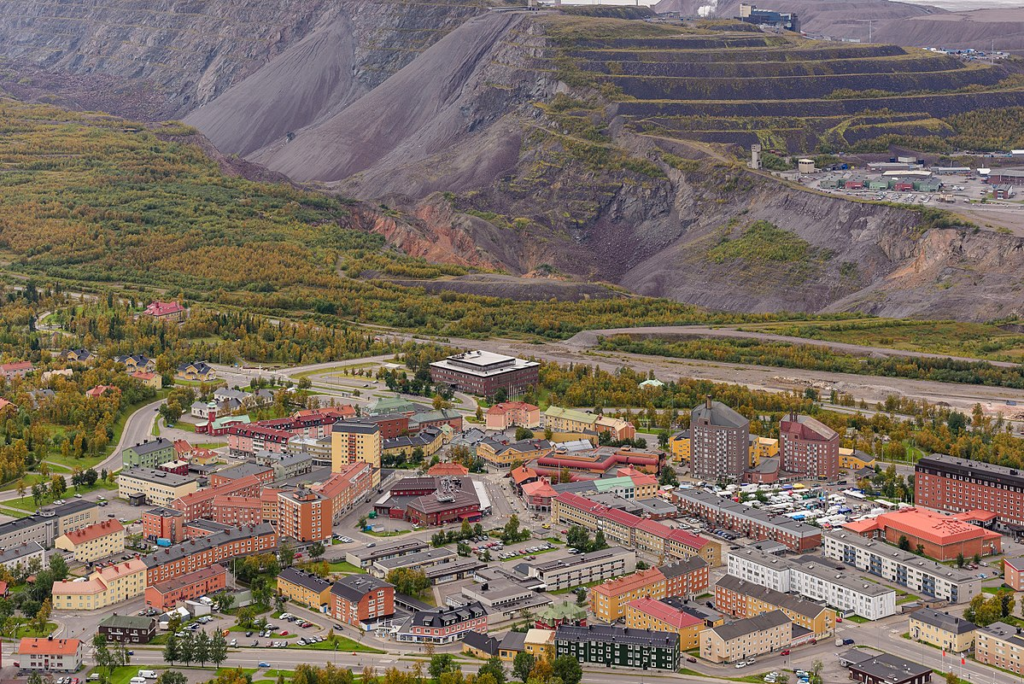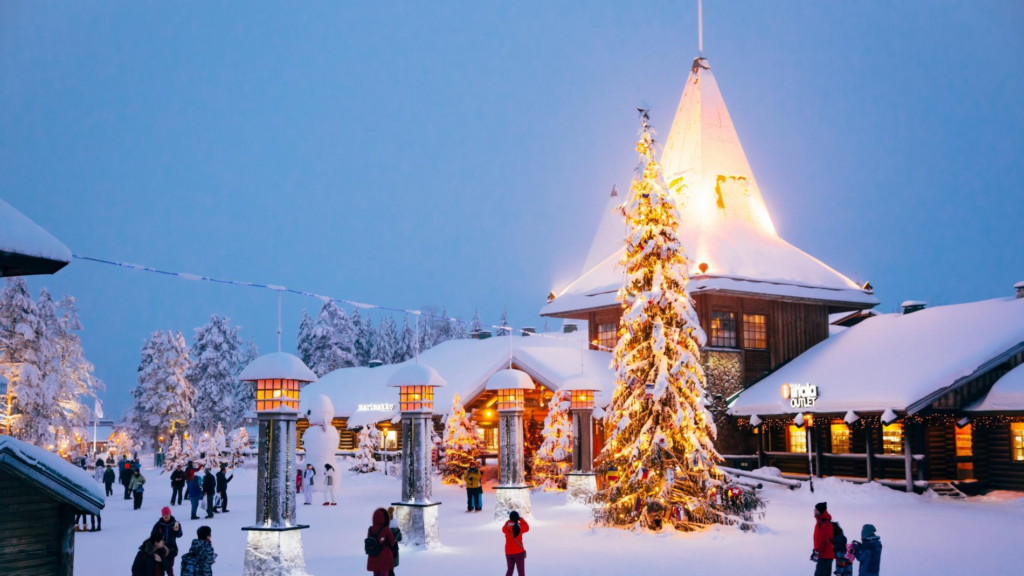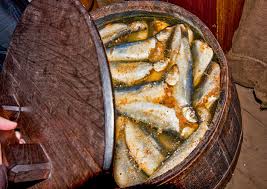Sweden, located in Northern Europe, is known for its stunning landscapes, rich history, and progressive society. From its picturesque archipelagos to vibrant cities, Sweden offers a unique blend of natural beauty and cultural experiences. The country is renowned for its commitment to sustainability, innovation, and a high quality of life, making it an attractive destination for travelers seeking adventure and relaxation. With a strong focus on social welfare and equality, Sweden embodies the values of modern living while cherishing its historical roots.
Table of Contents
Geography
Sweden is situated on the Scandinavian Peninsula in Northern Europe, bordered by Norway to the west and Finland to the northeast. The country has a long coastline along the Baltic Sea to the east and the Gulf of Bothnia to the northeast, offering breathtaking views and numerous islands. Covering an area of approximately 450,295 square kilometers, Sweden is the fifth-largest country in Europe. Its diverse geography includes vast forests, pristine lakes, and mountainous regions, providing a rich habitat for various wildlife.
Sweden’s terrain is characterized by its northern tundra, central plains, and southern agricultural lands. The Scandinavian Mountains run along the western border, offering opportunities for skiing and hiking. The country is also home to thousands of lakes, with Lake Vänern being the largest in Sweden and the third-largest in Europe. The unique geography of Sweden contributes to its varying climate, with cold winters and mild summers, making it an ideal destination for outdoor activities year-round.
States of Sweden
Sweden does not have states in the way some countries like the United States do. Instead, Sweden is divided into 21 counties (called “län” in Swedish). These counties are the top-level administrative divisions in the country. Each county is further subdivided into municipalities (“kommuner”), of which there are 290 in total.
Here is a table listing all 21 counties of Sweden, along with some of the municipalities included in each:
| No. | County (Län) | Municipalities (Kommuner) |
|---|---|---|
| 1 | Stockholm County | Stockholm, Solna, Sundbyberg, Nacka, Södertälje, Täby |
| 2 | Uppsala County | Uppsala, Enköping, Håbo, Knivsta, Tierp, Älvkarleby |
| 3 | Södermanland County | Eskilstuna, Nyköping, Katrineholm, Strängnäs, Flen, Trosa |
| 4 | Östergötland County | Linköping, Norrköping, Motala, Mjölby, Söderköping, Finspång |
| 5 | Jönköping County | Jönköping, Värnamo, Nässjö, Eksjö, Vetlanda, Tranås |
| 6 | Kronoberg County | Växjö, Ljungby, Alvesta, Älmhult, Tingsryd, Markaryd |
| 7 | Kalmar County | Kalmar, Västervik, Oskarshamn, Nybro, Mönsterås, Emmaboda |
| 8 | Gotland County | Gotland (single municipality) |
| 9 | Blekinge County | Karlskrona, Ronneby, Karlshamn, Sölvesborg, Olofström |
| 10 | Skåne County | Malmö, Helsingborg, Lund, Kristianstad, Ystad, Trelleborg |
| 11 | Halland County | Halmstad, Varberg, Falkenberg, Kungsbacka, Laholm, Hylte |
| 12 | Västra Götaland County | Gothenburg, Borås, Trollhättan, Skövde, Uddevalla, Alingsås |
| 13 | Värmland County | Karlstad, Arvika, Kristinehamn, Sunne, Säffle, Torsby |
| 14 | Örebro County | Örebro, Karlskoga, Kumla, Lindesberg, Hallsberg, Nora |
| 15 | Västmanland County | Västerås, Köping, Sala, Arboga, Fagersta, Hallstahammar |
| 16 | Dalarna County | Falun, Borlänge, Mora, Ludvika, Leksand, Avesta |
| 17 | Gävleborg County | Gävle, Sandviken, Hudiksvall, Söderhamn, Bollnäs, Ockelbo |
| 18 | Västernorrland County | Sundsvall, Örnsköldsvik, Härnösand, Sollefteå, Kramfors, Timrå |
| 19 | Jämtland County | Östersund, Krokom, Åre, Strömsund, Bräcke, Berg |
| 20 | Västerbotten County | Umeå, Skellefteå, Lycksele, Vindeln, Vännäs, Norsjö |
| 21 | Norrbotten County | Luleå, Piteå, Kiruna, Gällivare, Boden, Kalix |
History
Sweden’s history dates back to the Viking Age, around the 8th to 11th centuries, when Norse explorers and traders ventured across Europe and beyond. The Vikings established trade routes and settlements, leaving a lasting impact on the regions they explored. The medieval period saw the rise of powerful kingdoms, with Sweden becoming a unified nation in the late 12th century. The Kalmar Union, formed in 1397, united Sweden, Denmark, and Norway under a single monarch but dissolved in the early 16th century.
The 17th century marked Sweden’s emergence as a major European power during the Thirty Years’ War, expanding its territories and influence. However, the Great Northern War (1700–1721) led to significant territorial losses and a decline in power. The 19th century was a time of industrialization and social reform, with Sweden transitioning to a constitutional monarchy and establishing a welfare state. This period laid the foundation for Sweden’s modern society, characterized by a commitment to social justice, equality, and innovation.
In the 20th century, Sweden maintained a policy of neutrality during both World Wars, allowing it to emerge relatively unscathed. The country became known for its humanitarian efforts and contributions to international peace. Today, Sweden is recognized for its progressive social policies, strong economy, and commitment to sustainability, making it a model for other nations.
Top Ten Most Famous Places to Visit in Sweden
Stockholm

Stockholm, the capital of Sweden, is a stunning city built on 14 islands connected by bridges. Known for its beautiful architecture, vibrant culture, and rich history, Stockholm offers a unique blend of old and new. Visitors can explore the historic Gamla Stan (Old Town), visit the Royal Palace, and enjoy the picturesque waterfront views. The city is also home to numerous museums, including the Vasa Museum, which houses a well-preserved 17th-century warship.
Gothenburg

Gothenburg, located on the west coast, is Sweden’s second-largest city and a vibrant cultural hub. Known for its charming canals, picturesque parks, and lively atmosphere, Gothenburg offers a variety of attractions for visitors. The Liseberg amusement park, Universeum science center, and the trendy Haga district are popular destinations. The city’s seafood scene is also noteworthy, with fresh catches from the North Sea gracing local restaurants.
Malmö

Malmö, situated across the Öresund Strait from Copenhagen, is a dynamic city known for its modern architecture and green spaces. The iconic Turning Torso skyscraper, the tallest building in Sweden, is a symbol of the city. Visitors can explore the historic Malmö Castle, stroll through Kungsparken, and enjoy the lively atmosphere of the Möllevången district. The city’s proximity to Denmark makes it an ideal base for exploring both countries.
Uppsala

Uppsala is a historic university city known for its prestigious university, founded in 1477. The city’s rich history is reflected in its stunning architecture, including the Uppsala Cathedral and the Gustavianum museum. Visitors can explore the beautiful botanical gardens and take a stroll along the picturesque river. Uppsala also hosts numerous cultural events and festivals throughout the year, celebrating its vibrant community.
Visby

Visby, located on the island of Gotland, is a UNESCO World Heritage site known for its well-preserved medieval architecture. The city is surrounded by ancient walls and features charming cobblestone streets, historic churches, and ruins. Visitors can explore the medieval market during the annual Medieval Week and enjoy the island’s beautiful beaches and nature reserves. Visby is a perfect destination for history enthusiasts and those seeking a peaceful retreat.
Kiruna

Kiruna, situated in the far north of Sweden, is known for its stunning natural beauty and unique attractions. The town is famous for the Icehotel, an exquisite hotel made entirely of ice and snow, rebuilt each year. Visitors can experience winter sports such as dog sledding and snowmobiling, or witness the mesmerizing Northern Lights during the winter months. Kiruna is also home to the Kiruna Church, one of Sweden’s most beautiful wooden churches.
Örebro

Örebro is a charming city located in central Sweden, known for its historic castle and picturesque parks. The Örebro Castle, dating back to the 13th century, is a major landmark and a symbol of the city’s history. Visitors can explore the beautiful Wadköping open-air museum, stroll along the banks of the Svartån River, and enjoy the vibrant atmosphere of the city center. Örebro also hosts various cultural events and festivals throughout the year.
Stockholm Archipelago

The Stockholm Archipelago is a breathtaking collection of over 30,000 islands, offering stunning landscapes and outdoor activities. Visitors can explore charming villages, hike through lush forests, and enjoy boating and kayaking in the pristine waters. The archipelago is accessible by ferry from Stockholm, making it a popular destination for day trips. Each island has its own unique charm, offering a perfect escape from the bustling city.
Kalmar Castle

Kalmar Castle, located in the town of Kalmar, is a well-preserved fortress dating back to the 12th century. The castle played a significant role in Sweden’s history, serving as a royal residence and a military stronghold. Visitors can explore the castle’s beautiful interiors, learn about its history through exhibitions, and enjoy guided tours. The surrounding gardens and waterfront views make Kalmar Castle a picturesque destination.
Laponia

Laponia is a UNESCO World Heritage site located in Swedish Lapland, known for its stunning natural landscapes and cultural significance to the Sámi people. The region offers breathtaking views of mountains, rivers, and wilderness, providing ample opportunities for outdoor activities such as hiking, fishing, and wildlife watching. Visitors can learn about the Sámi culture, experience traditional reindeer herding, and explore the pristine nature of this unique area.
Culture
The official language of Sweden is Swedish, a North Germanic language closely related to Danish and Norwegian. Swedish is spoken by the majority of the population and is used in government, education, and media. The language has several regional dialects, reflecting the country’s diverse cultural heritage. English is widely spoken as a second language, with many Swedes being fluent, making it easy for travelers to communicate and navigate the country.
Swedish lifestyle is characterized by a strong emphasis on work-life balance, sustainability, and outdoor activities. The concept of “lagom,” meaning “just the right amount,” is central to Swedish culture, promoting moderation and balance in all aspects of life. Swedes enjoy spending time in nature, participating in outdoor activities such as hiking, skiing, and biking. The country is known for its commitment to environmental sustainability, with a focus on renewable energy and eco-friendly practices.
Sweden is known for its rich traditions and customs, many of which are celebrated throughout the year. Midsummer, celebrated in June, is one of the most important festivals, marking the arrival of summer with festivities that include dancing around the maypole, singing traditional songs, and enjoying traditional foods. Lucia, celebrated in December, honors St. Lucia and features candlelit processions, music, and saffron buns. The Swedish “fika,” a coffee break with pastries, is an essential part of daily life, emphasizing the importance of taking time to relax and connect with others.
Festivals
Sweden hosts numerous festivals and events throughout the year, celebrating its rich culture and traditions. The Midsummer Festival, held in June, is a lively celebration of the summer solstice, featuring traditional dances, maypole decorations, and feasting on herring and new potatoes. The Stockholm Pride Festival, one of the largest LGBTQ+ events in Scandinavia, takes place every August, promoting equality and diversity. The Lucia Festival, celebrated on December 13, features candlelit processions and traditional songs honoring St. Lucia. These festivals highlight Sweden’s commitment to community, inclusivity, and celebration.
Economy
Sweden boasts a strong and diversified economy, known for its innovation, high productivity, and commitment to sustainability. The country is home to several multinational corporations and is a leader in technology, manufacturing, and renewable energy. Key industries include automotive, telecommunications, pharmaceuticals, and information technology. Sweden consistently ranks high in global competitiveness, thanks to its skilled workforce, strong infrastructure, and supportive business environment. The government prioritizes social welfare and environmental sustainability, ensuring a high standard of living for its citizens.
Tourism
Tourism plays a significant role in Sweden’s economy, attracting millions of visitors each year. The country’s stunning natural landscapes, vibrant cities, and rich cultural heritage make it an appealing destination for travelers. Popular activities include exploring national parks, experiencing the Northern Lights, and visiting historical sites. Sweden’s commitment to sustainable tourism initiatives aims to preserve its natural and cultural treasures while providing authentic experiences for visitors. The government promotes eco-friendly travel options and encourages visitors to explore the country’s diverse regions, from the bustling streets of Stockholm to the serene beauty of the countryside.
Top Eight Most Famous Food Of Sweden








Interesting Facts About Sweden
- Sweden is known for its high standard of living and is consistently ranked among the happiest countries in the world.
- The country has over 100,000 lakes, making it a paradise for water sports and fishing enthusiasts.
- Sweden is home to the Nobel Prize, awarded annually in various fields to honor outstanding contributions to humanity.
- The Swedish concept of “lagom” emphasizes balance and moderation in all aspects of life.
- The country has a rich tradition of design and innovation, with iconic brands like IKEA and H&M originating in Sweden.
- Sweden has a strong commitment to gender equality, with one of the highest rates of female workforce participation globally.
- The country is famous for its unique wildlife, including moose, reindeer, and a variety of bird species.
- Sweden has more than 2,000 km of coastline, offering stunning views and opportunities for sailing and fishing.
- The country is known for its vibrant music scene, producing internationally acclaimed artists such as ABBA and Roxette.
- Sweden celebrates “Kanelbullens dag” (Cinnamon Bun Day) on October 4, honoring the beloved pastry.
Future Perspective
Sweden is focused on maintaining its position as a global leader in sustainability and innovation. The government aims to further reduce carbon emissions and invest in renewable energy sources to combat climate change. Sweden’s commitment to social welfare, education, and research continues to foster a skilled workforce capable of adapting to a rapidly changing global economy. By promoting innovation and sustainability, Sweden is poised to remain an attractive destination for travelers and a model for other nations.
Conclusion
Sweden is a remarkable country that offers a unique blend of natural beauty, rich history, and modern innovation. From its stunning landscapes and vibrant cities to its progressive social policies and commitment to sustainability, Sweden invites travelers to explore its many facets. As the country continues to evolve and embrace new challenges, it remains a prominent destination in Europe, where tradition and modernity coexist harmoniously, and every moment is filled with inspiration and adventure.
let’s enjoy few years on earth with peace and happiness….✍🏼🙏

